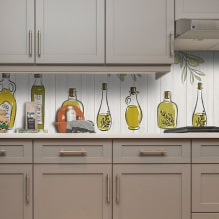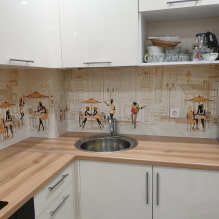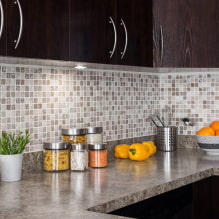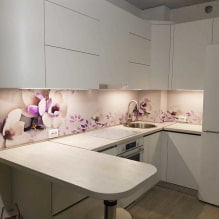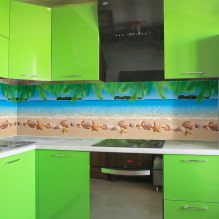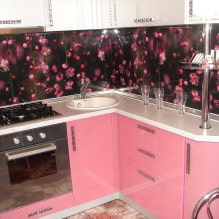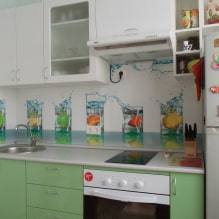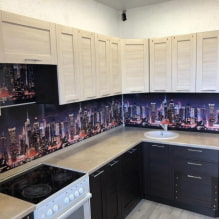What to look for when choosing?
In order for the kitchen apron to last for several years and not spoil the appearance of the interior, and at the same time fully perform its main function – protecting the wall, you need to choose the right finishing material. Therefore, a high-quality plastic kitchen apron must meet the following requirements:
- Optimum thickness. The thinner the tile, the greater the likelihood of its mechanical or temperature damage.
- Solid canvas. Find on sale or order a sheet according to the size of your kitchen or larger. Here, as with a glass skinale – the fewer joints, the easier it is to maintain and the better the appearance.
Important! The thickness of the plastic varies depending on the material: PVC – 5-10 mm, ABS – 1.5 mm, acrylic – 5 mm.
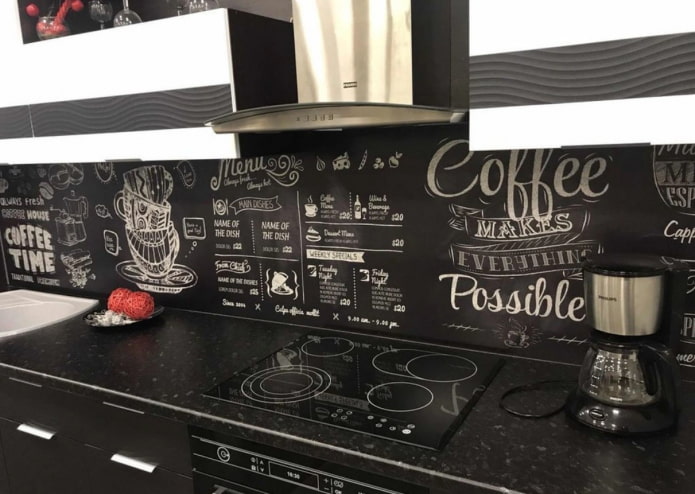
The photo shows an imitation of a chalk board
Types and characteristics of materials
The properties of a plastic apron depend not only on the size, but also on the composition from which it is made.
PVC apron
A kitchen apron made of polyvinyl chloride has only one advantage: it is cheap. In other respects, PVC plastic panels are significantly inferior to their analogues: the patterns on them fade, glossy coatings get scratched, and the material itself releases harmful substances into the air.
In addition, it is suitable only for “cold” zones. Since a PVC apron easily melts from heating, it is strictly prohibited to install it near the stove.
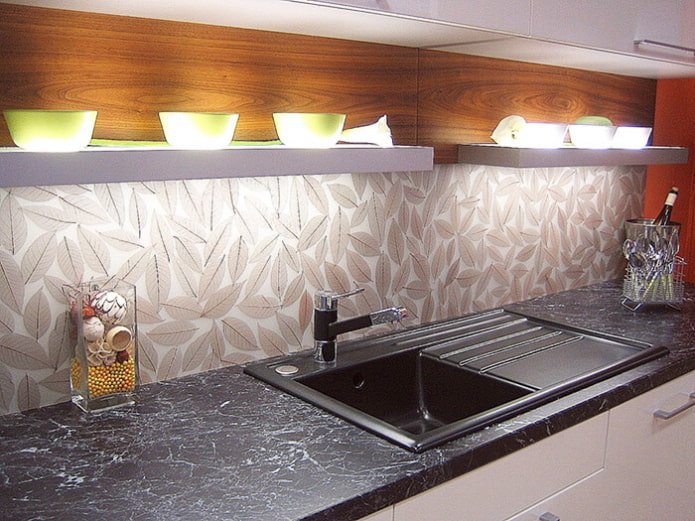
The photo shows cheap polyvinyl chloride plastic
ABS plastic apron
A kitchen apron made of ABS plastic (acrylonitrile butadiene styrene) is more practical, but it also costs a little more than PVC. Unfortunately, it is also not recommended to use it near the stove: the maximum temperature that a plastic apron can withstand is 80 degrees Celsius. A little more and the beautiful plastic will soften and slide down under its own weight.
But ABS plastic panels look stylish (they resemble skinals), are easy to install, and are easy to clean (they can withstand small abrasives and chemicals).
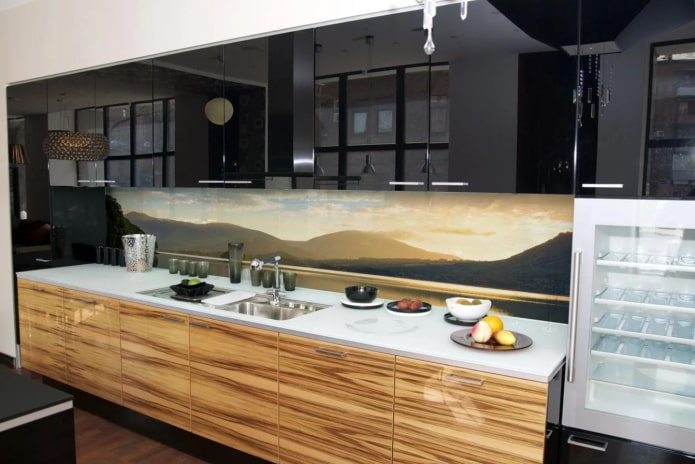
Acrylic
If you plan to have a plastic apron near the stove, you need to use acrylic. Polycarbonate is the only possible option that is resistant to heating.
It looks almost indistinguishable from glass – it does not have a yellowish undertone, unlike ABS. But this is only at first – the surface is scratched from mechanical damage and constant loads, so after 1-2 years after installation, the acrylic plastic apron will lose its aesthetics.
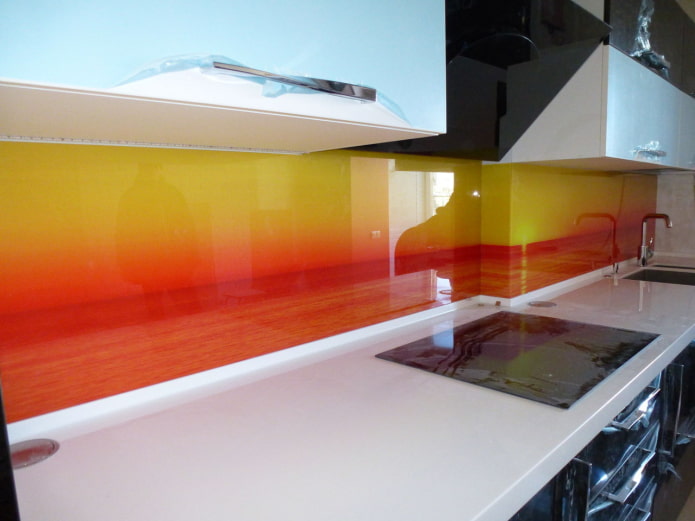
The photo shows an acrylic apron
Pros and cons
It’s up to you to decide whether to use a plastic apron in your kitchen or not. We only suggest that you once again evaluate the advantages and disadvantages of this solution:
How to mount it yourself?
Installing a plastic apron is a relatively clean and simple task; you can install it even after the renovation is complete. The process will not take more than 2 hours.
Be sure to look at the correct order for renovating a kitchen.
Step-by-step instructions
To install the apron, you will need:
- a level (preferably a laser one);
- a tape measure and a pencil;
- a stationery knife or scissors;
- a suitable glue (liquid nails, sealant, universal rubber-based).
Also prepare the panels and decorative strips themselves — they will come in handy to cover the ends, corners and joints.
Important! The surface must be prepared before pasting: leveled, cleaned of dust, degreased (if you plan to glue on paint or tiles).
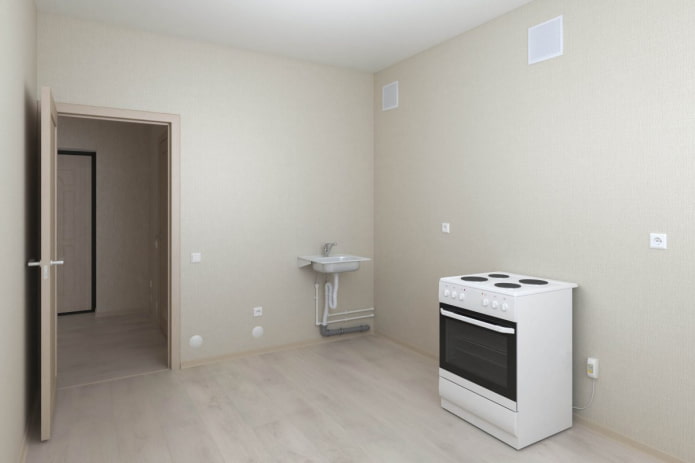
Let’s get to work:
- If there is no furniture yet, draw the top and bottom lines of the kitchen using a level, ruler and pencil.
- Cut out the panels, cutting them to the desired length.
- Mark the locations of the sockets on the panels, cut them out.
- Apply glue to the inside, press the decor to the wall, wait until it dries completely.
- Glue the decorative strips on ends and joints.
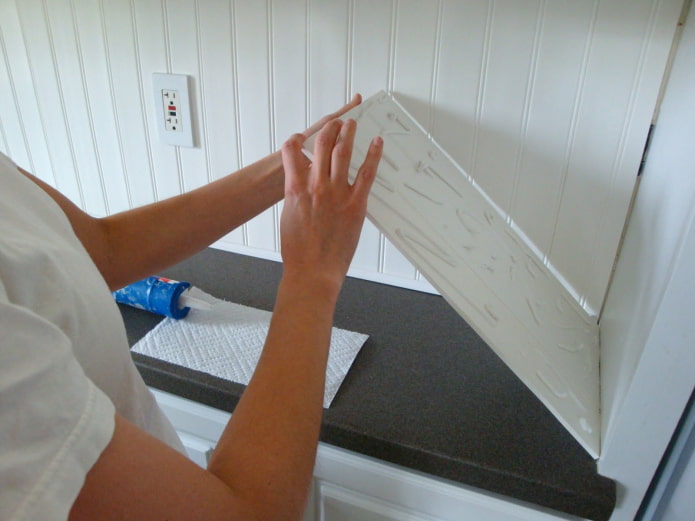
Tip! To avoid having to decorate the top and bottom edges of the plastic, tuck the apron under the furniture (upper cabinets and countertops) by 3-5 mm.
Video guide
To make sure that gluing a plastic apron is really easy, watch a short video instruction:
Design options
There are as many ideas for decorating a plastic apron as there are printing options on it – an unthinkable number. The most popular motifs were and remain flowers, fruits, still lifes.
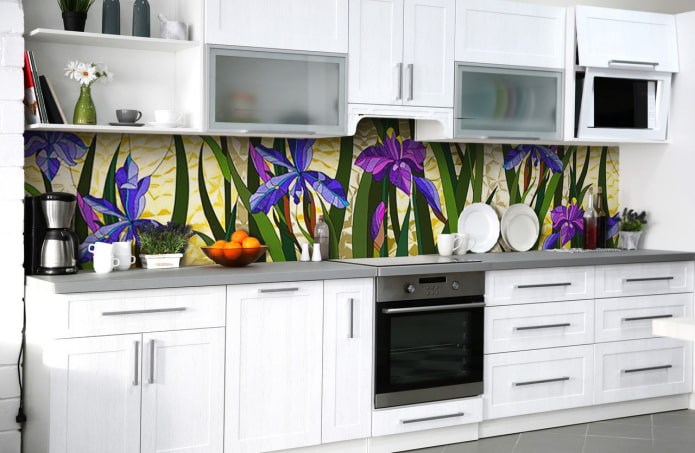
The photo shows a bright floral design
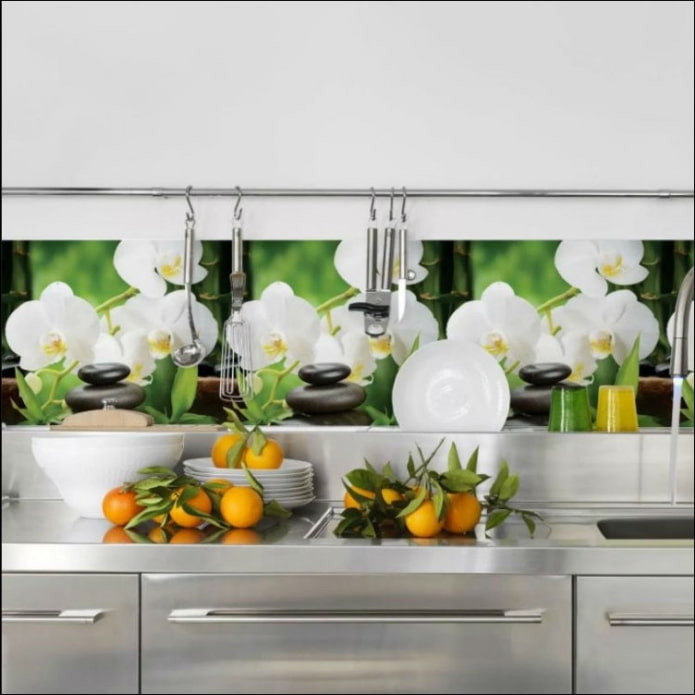
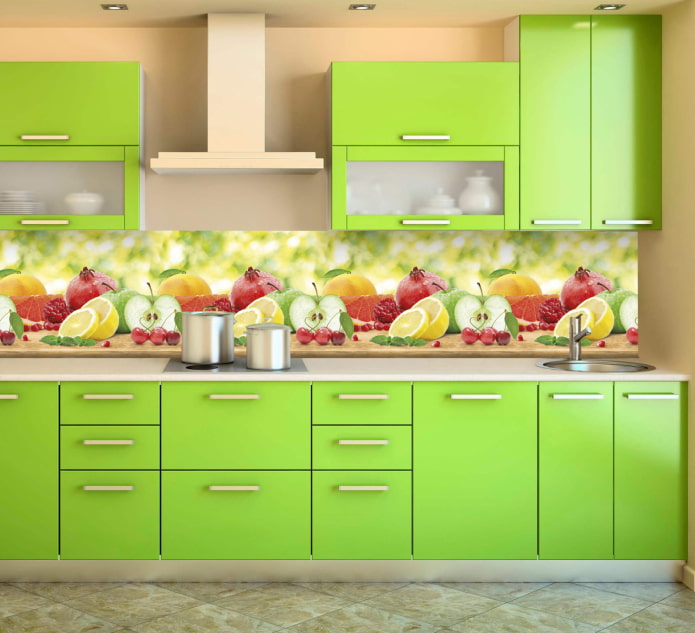
Most often, the shades are made to repeat the facades – for example, in a white kitchen – white orchids, in a black and red kitchen – cherries on a dark background.

The second most popular motif is landscapes. The paintings can depict cities with tall buildings, cozy city streets, the seashore, a forest, a flower meadow.
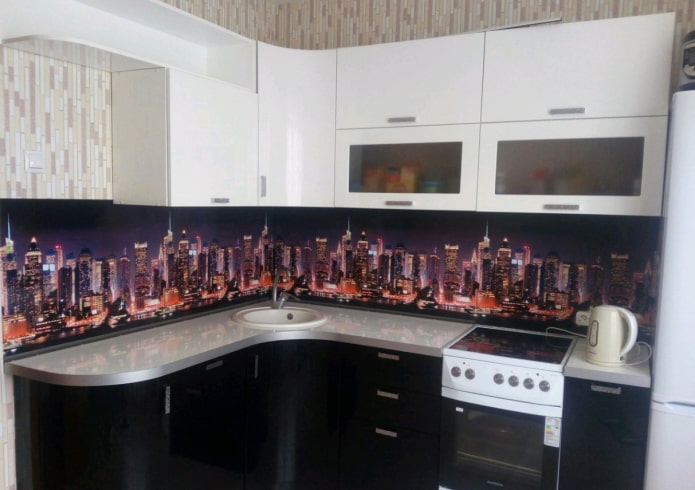
However, almost none of the listed options fit into modern styles, so today neutral designs with imitation tiles (oriental, mosaic, boar), chalk boards, wood or metal textures are more popular.
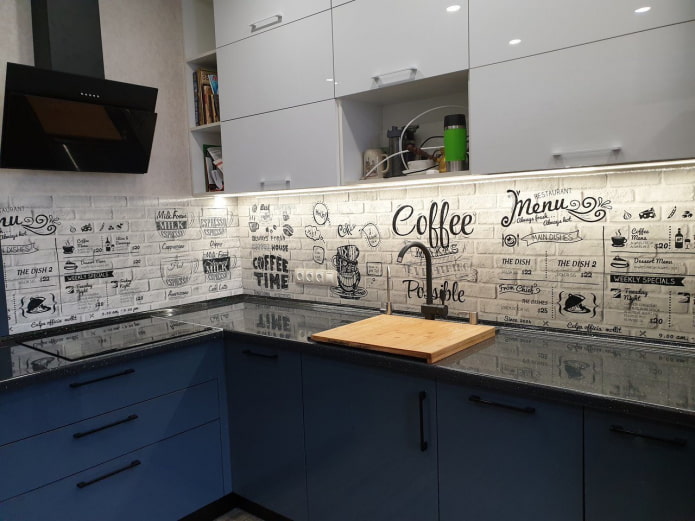
In the photo, a stylish plastic apron
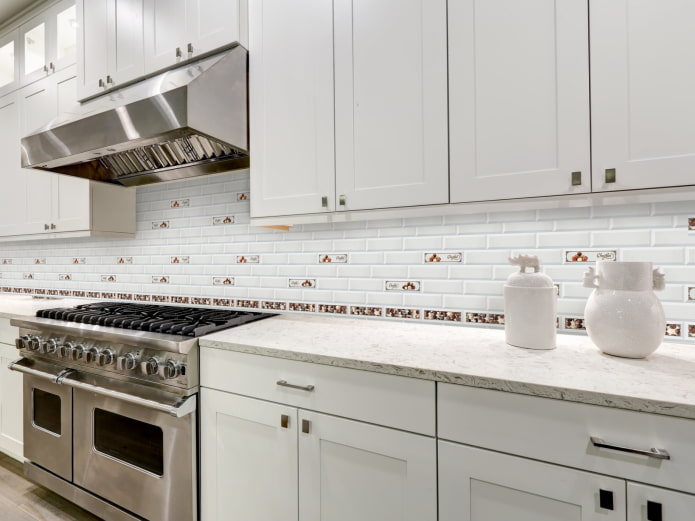
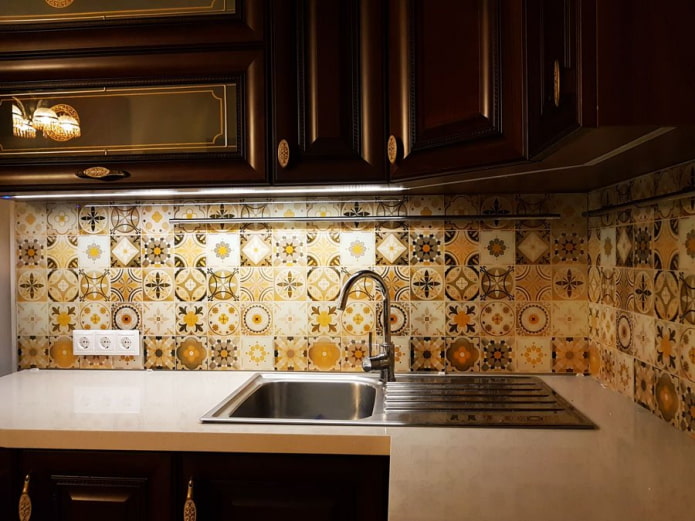
When choosing the design of the apron, do not forget that no matter how beautiful and clear the pattern is, it will not hide the origin of the plastic: therefore, it will not be possible to pass it off as brickwork or a glass panel. But it is worth a try! Some acrylic options look very stylish – look at the photos in the gallery and see for yourself.
